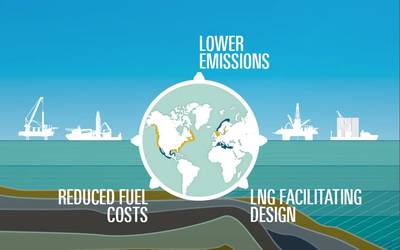GustoMSC, a Dutch design and engineering company focused on offshore energy, says the offshore industry has much to gain from examining the feasibility of using liquefied natural gas (LNG) to fuel mobile offshore units such as construction vessels, drillships, jack-ups and semi-submersibles.
GustoMSC has been monitoring the development of LNG as a marine fuel for several years, culminating in a recently finished R&D project into LNG for its design portfolio. The firm’s associated report,
LNG fueled Mobile offshore units, examines the use of LNG for mobile offshore units and considers the most relevant technical, operational and economic factors for the use of this fuel in such units.
GustoMSC concludes that feasible LNG applications are possible when all technical, operational and economic aspects are considered at an early stage, while different possibilities exist to optimize designs, business cases and supply chains. All of these require careful alignment with the unit’s design and operations.
“As designers, we try to take a holistic approach to these things and consider everything from technical to finance to vendors, and we think that’s a real added value,” said Douwe de Jong Project Manager R&D GustoMSC and author of the report. “What we’ve tried to do with these concepts is to show a very big design space of options and discussion topics.”
Of the units considered, the dynamically positioned (DP) vessels and semi-submersible showed the highest potential for fuel cost savings. Offshore wind installation was identified as a promising market for implementation of LNG as a fuel, due to its predictable operational profile and associated shore bases.
When implemented correctly, the result can be significant savings in fuel costs and emissions over a unit’s lifetime, as well as future-proofing with regard to new Emission Control Areas (ECA), emissions quota and increased global uptake of natural gas.












